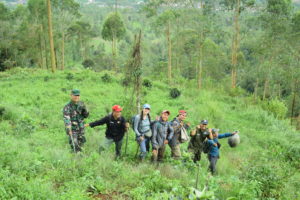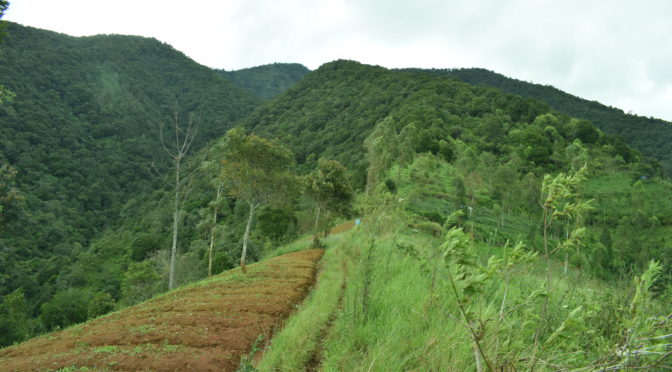“It is real, we are here, we have finally stepped onto the forest floor”.
Last month, the LFP team finally entered the protected forest area! It is a nature reserve of Papandayan Mountain which is located just above our field station.
We aimed to do a wildlife occupancy survey in Papandayan mountain, and in order to prepare for the actual survey, we did a preliminary survey. The area of Papandayan mountain is a chain of green area which are connected with farmland in which our lorises live. In fact, some of our lorises like Fernando or Solo used to travel far away into the forest for several days. The forest is also used by some lorises as a destination whenever they decide to disperse from their family.
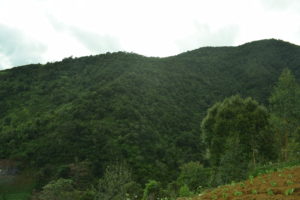
In Indonesia, there are laws and regulations that govern which activities are allowed inside the conservation area and which are not. As one of the conservation areas, Papandayan Nature Reserve are under rules which obliges every temporary visitor to have a permit to enter the area. The permit called SIMAKSI (Ijin Masuk Kawasan Konservasi). There are zones inside the Papandayan nature reserve area, where only research-related activities with SIMAKSI are allowed to visit all zones. Therefore, it remained as a mystery of what our lorises do when they are inside the forest. But good news, no longer wondering, we now have the SIMAKSI and ready to do a study!
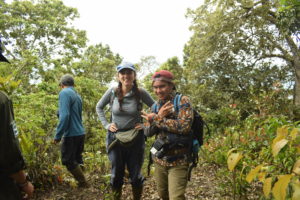
Together with the guide from BKSDA and BABINSA, we entered Papandayan mountain starting from the Cipaganti area. The forest is a secondary forest in which the ecosystem is affected by the volcanic activity of Papandayan mountain, therefore it can burn and regrowth at any point. On the front gate of the route, we were welcomed with chains of tall shrubs so we have to cut a little to make a way in. Many areas of nature reserve of Papandayan mountain in Cipaganti village is directly adjacent with agricultural farmland area, therefore the tree community at the buffer area is different with areas that far from the farms. The tall shrubs and red calliandra (Calliandra calothyrsus) laid for several hundred meters before we finally met the trees.
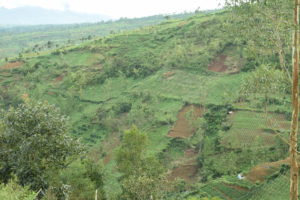
We planned to reach one of the hill tops, and going down through different route from the way in. Moving upwards, we started to see big trees such as magnolia (Magnolia sp.), evergreen schima (Schima wallichii), Ficus sp., and Vaccinium sp. In the first finding, we are shocked by the claw mark on the tree. This is a good sign! The Papandayan nature reserve area stretches over 600 ha, hopefully, the big predators are still wandering in this area! However, our next findings were not as exciting as our first. We found three impromptu illegal camps on the way up, and two on the way down. Those camps are made by the patch-up items such as leaves, used banner, or tarpaulin, and meant to be temporary to sustain the hunter for several nights before he gets the target or moves to another area.
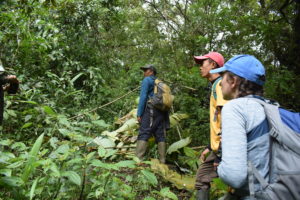
Complementing the illegal camp, we found many bird traps. But those findings are nothing compared to meeting the actual hunter! It was in the middle of our journey to the top that we heard barking and a man shouting. We stood silent while prepared for any confrontation or unexpected reaction. One of our team shouted, and the hunter shouted back. We pretended that we were just another hunter calling a friend. However, the eye-to-eye encounter never happened. The hunters moved away after an exchange of calls between him and us.
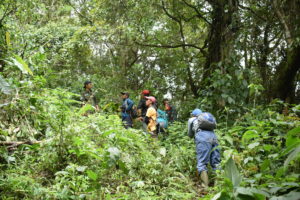
The fact that we found an illegal camp, bird traps, and encountered the hunter, is ironically sad, considering that the hunting law in Cipaganti has been approved. However, even though the level of hunting law that we have approved is valid for the village, there are national-level regulations that are valid specifically for conservation areas. Regardless of the protection status of the wildlife and habitat, hunting or logging is strictly prohibited in this area, even ecosystem restoration for the illegally cleared area needs complicated assessment before finally being allowed.
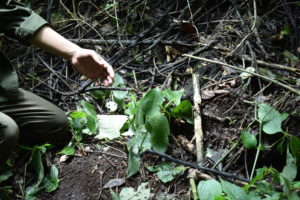
Apparently, there are hundreds of people out there that want to benefit from forests, and there is no guarantee that they know how conservation area works, about the wildlife and habitat that are endangered and protected, which makes broader education and outreach more and more important!
